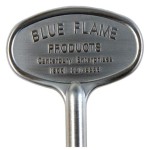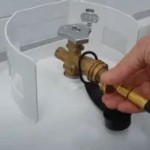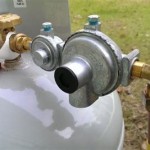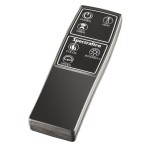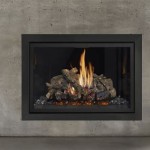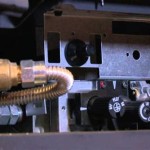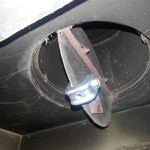Fireplace Propane Heater Inserts: Efficient and Convenient Home Heating
Fireplace propane heater inserts represent a significant advancement in home heating technology, offering a convenient and efficient alternative to traditional wood-burning fireplaces. These inserts are designed to fit directly into existing fireplace openings, transforming them into powerful and easily controllable heating sources. Their popularity stems from their ability to provide reliable warmth with minimal hassle, surpassing the complexities and environmental concerns associated with wood-burning options.
This article delves into the various aspects of fireplace propane heater inserts, exploring their functionality, benefits, installation considerations, maintenance requirements, and the factors that influence their selection. It aims to provide a comprehensive overview for homeowners considering upgrading their fireplace or seeking a more efficient and convenient way to heat their living space.
Understanding the Functionality of Fireplace Propane Heater Inserts
Fireplace propane heater inserts operate by burning propane gas within a sealed combustion chamber. This chamber is typically constructed from durable materials such as cast iron or steel, designed to withstand high temperatures and ensure safe operation. The burning propane generates heat, which is then distributed into the room through various mechanisms.
Most propane inserts utilize a fan-forced convection system. A fan draws air from the room, passes it over the heated combustion chamber, and then circulates the warmed air back into the room. This forced-air circulation ensures efficient and even heat distribution throughout the space. Some models also incorporate radiant heating elements, which radiate heat directly into the room, providing a more immediate and localized warming effect.
The propane combustion process is controlled by a thermostat, allowing homeowners to precisely regulate the temperature of the room. The thermostat monitors the room temperature and automatically adjusts the gas flow to the burner, maintaining the desired heat level. This thermostatic control contributes to energy efficiency by preventing over heating and minimizing propane consumption.
Modern propane inserts are equipped with safety features such as oxygen depletion sensors (ODS). These sensors monitor the oxygen levels in the room and automatically shut off the gas supply if the oxygen level drops to a dangerous level, preventing carbon monoxide poisoning. Pilot lights are often used to ignite the burner, and electronic ignition systems are also becoming increasingly common, eliminating the need for a standing pilot light and further improving energy efficiency.
Furthermore, many inserts feature realistic artificial logs made from ceramic or refractory materials. These logs are designed to mimic the appearance of burning wood, providing the aesthetic appeal of a traditional fireplace without the associated drawbacks of wood-burning. The logs are strategically placed to maximize heat radiation and create a visually appealing flame pattern.
Advantages of Choosing a Propane Fireplace Insert
Propane fireplace inserts offer numerous advantages over traditional wood-burning fireplaces and other heating methods. These benefits contribute to their growing popularity among homeowners seeking a reliable, efficient, and convenient heating solution.
One of the primary advantages is their ease of use. Unlike wood-burning fireplaces, propane inserts require no wood gathering, stacking, or hauling. The insert can be turned on and off with the flip of a switch or the push of a button, providing instant heat whenever needed. The thermostatic control ensures consistent and comfortable temperatures without the need for manual adjustments.
Propane inserts are also significantly cleaner than wood-burning fireplaces. They produce minimal smoke, ash, and creosote, reducing the risk of chimney fires and indoor air pollution. This cleaner combustion process contributes to a healthier indoor environment and reduces the need for frequent chimney cleaning and maintenance.
Energy efficiency is another key benefit. Propane inserts are typically much more efficient than traditional fireplaces, converting a higher percentage of the fuel into usable heat. The sealed combustion chamber and controlled airflow minimize heat loss through the chimney, maximizing heating output and reducing propane consumption. The thermostatic control further enhances energy efficiency by preventing overheating and ensuring that the insert only operates when needed.
Propane inserts also offer greater design flexibility. They are available in a wide range of styles, sizes, and finishes to complement any home décor. From traditional to contemporary designs, homeowners can choose an insert that seamlessly integrates into their existing fireplace opening and enhances the overall aesthetic of the room. The availability of various venting options also allows for greater installation flexibility.
Finally, propane inserts offer enhanced safety features. The sealed combustion chamber prevents sparks and embers from escaping, reducing the risk of fires. The oxygen depletion sensor and other safety mechanisms provide added protection against carbon monoxide poisoning and other potential hazards.
Installation, Maintenance, and Selection Considerations
The installation of a fireplace propane heater insert typically requires professional expertise to ensure safe and proper operation. The installation process involves several key steps, including venting, gas line connection, and electrical wiring. Proper venting is crucial for removing combustion gases and preventing carbon monoxide buildup. A qualified technician will determine the appropriate venting system based on the insert model and the existing chimney structure.
The gas line connection must be performed by a licensed gas fitter to ensure a secure and leak-free connection. The electrical wiring must also be done by a qualified electrician to ensure proper grounding and prevent electrical hazards. Once the insert is installed, it should be tested to verify that it is operating correctly and safely.
Regular maintenance is essential for ensuring the long-term performance and safety of a propane insert. This includes periodic cleaning of the burner, venting system, and other components. The venting system should be inspected annually for blockages and damage. The burner should be cleaned to remove any debris or carbon buildup that could affect its performance. The oxygen depletion sensor should also be tested regularly to ensure that it is functioning properly.
When selecting a propane fireplace insert, several factors should be considered. The size of the room to be heated is a primary consideration. The insert should be sized appropriately to provide adequate heating without being oversized or undersized. The heating capacity of the insert is typically measured in British thermal units (BTUs). A larger room will require an insert with a higher BTU rating.
The style and design of the insert should also be considered. The insert should complement the existing décor of the room and enhance its overall aesthetic appeal. The availability of various venting options should also be considered. Some inserts require a direct vent system, while others can be vented into an existing chimney.
The energy efficiency of the insert is another important factor. Look for inserts with high efficiency ratings and thermostatic control. These features will help to minimize propane consumption and reduce heating costs. Finally, consider the safety features of the insert. Look for inserts with oxygen depletion sensors, electronic ignition systems, and other safety mechanisms.
Costs associated with propane inserts include the initial purchase price, installation costs, and ongoing fuel costs. The purchase price of an insert can range from several hundred to several thousand dollars, depending on the size, features, and brand of the insert. Installation costs can also vary depending on the complexity of the installation. Ongoing fuel costs will depend on the price of propane and the amount of usage.
Ultimately, choosing a fireplace propane heater insert offers a compelling combination of convenience, efficiency, and aesthetic appeal. By carefully considering the factors outlined above, homeowners can select an insert that meets their specific heating needs and enhances the comfort and value of their home.

Enviro E Series Gas Or Propane Insert Fireplace Fireplaces By Cameron

Gas Fireplace Insert Propane Regency Vermont Castings Napoleon

Gas Fireplace Insert Propane Regency Vermont Castings Napoleon

Gas Fireplace Inserts Napoleon Fireplaces

Duluth Forge 27 In W 26000 Btu Black Vent Free Dual Burner Gas Fireplace Insert The Inserts Department At Com

Gas Fireplace Inserts Fireplacesdirect Com

Enviro E Series Gas Or Propane Insert Fireplace Fireplaces By Cameron

How To Choose A Propane Fireplace Insert

Bluegrass Living 34 In W 32000 Btu Black Vent Free Dual Burner Gas Fireplace Insert And Remote The Inserts Department At Com

Inserts Gas Kingsman Vented Fireplace Insert Millivolt Propane Vfi30lp
Related Posts

